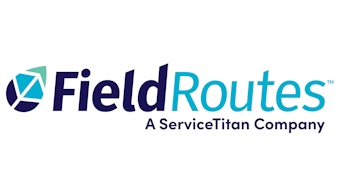
Every subcontractor you hire can enhance or derail your work. A focus on subcontractor risk management can be the difference between a profitable, well-executed project and one that suffers costly delays—or worse, injuries or fatalities.
A strong subcontractor risk management strategy is built on three key pillars: a thorough risk assessment, clear control measures and adequate insurance coverage. These components protect your workforce, property and equipment and ensure your project stays within budget and on schedule.
Key steps to assessing subcontractor risk
Before signing a contract, evaluate how your subcontractor will impact your project’s safety and bottom line. A thorough vetting process helps avoid costly headaches and ensures smooth collaboration. Focus on these key criteria:
Financial stability: Does the subcontractor have the resources to complete the job? Review financial statements, credit reports and their current workload.
Qualifications and credentials: Verify their qualifications for specialized tasks. Ask for references and visit previous job sites to assess the work quality. Request their certificate of insurance and proof of licensing.
If a subcontractor produces faulty workmanship, the GC may have to take steps to remedy the problems—possibly going so far as to find another qualified contractor to fix them. Poor quality in one trade could adversely affect other aspects of the project, even necessitating demolition work or engineering modifications to address the problems.
This could jeopardize your ability to complete the project on time and reflect poorly on you. It could also make it difficult to attract the best-in-class subcontractors for future projects.
Safety record: Review OSHA violations, injury rates, recent losses and experience modification rate (EMR).
Implementing the six effective risk controls
Without clear oversight and strong safety protocols, even the best subcontractor can unintentionally cause delays, budget overruns or safety hazards. It’s the general contractor's (GC) responsibility to design risk control measures aligned to the job’s hazards and assign oversight to ensure they’re followed. Here are six essential practices.
1. Create one source of truth for policies and procedures: Everyone should know the safety policies and procedures on your project site. While subcontractors may have their own safety rules—you can integrate any project-specific protocols—standardizing safety requirements across all contractors helps avoid confusion. This unified system ensures that all subcontractors are aligned with your project’s safety expectations, reducing misunderstandings and keeping everyone focused on safety.
2. Require a signature: A handshake is not enough. Subcontractors should sign a contract that clearly defines responsibilities, timelines, scope of work and safety obligations for each project. Ensuring clear accountability is critical—the signature formalizes their commitment to these responsibilities and holds subcontractors accountable.
3. Identify risks proactively: Each subcontractor brings unique risks based on their tasks. Identify these risks early and implement additional safety protocols or oversight where needed. For example, a subcontractor handling excavation presents different risks than one working on electrical systems. Proactive risk management ensures potential hazards are addressed before they escalate.
4. Orient and train the team for the site: Every project site has unique risks. Conduct a site walk-through with subcontractors, outlining hazards, emergency protocols, and safety procedures. Regular training should continue throughout the project, particularly as conditions change. Even if you’ve worked with the subcontractor before, site-specific risks should be addressed through training and orientation.
5. Use contract to off-load risk: Always require a written agreement between the GC and every subcontractor—no matter how small the job. Too often a handshake is all that it takes, leaving the GC without recourse when there’s a loss. Contracts must contain the correct legal language and scopes of work for each subcontractor and project with liability and indemnification transferring correctly to all parties involved. Contracts should be written in a way that minimizes the risk of being misunderstood or disputed—the goal being to avoid costly litigation. Have your legal team approve the contracts, and ensure that subcontractors carry adequate insurance.
6. Encourage two-way communication: Open communication is essential for a safe work environment. Regular check-ins, safety briefings and workflow planning sessions create opportunities to discuss risks and site conditions. Encourage subcontractors to report hazards early, allowing you to address them before they become significant issues.
Even with these controls in place, GCs must continuously monitor subcontractor performance. Regular safety audits ensure compliance with protocols and quality standards. If safety deviations occur, address them immediately and document any changes to the safety plan.
Insurance to cover subcontractor risk
Control measures alone can’t shield your business from all challenges. That’s why comprehensive insurance is essential. The right coverage lets you focus on projects, knowing you have a safety net for the unexpected.
Consider these common coverages:
- Workers’ compensation: Covers injuries to employees on the job.
- Property insurance: Protects against damage to the site or materials.
- General liability: Covers third-party injuries or property damage.
- Subcontractor default insurance (SDI): Protects GCs and project owners from financial losses due to subcontractor default.
- Builder’s risk insurance: Provides protection for the structure under construction, covering damage during the project.
Other coverages you may want to consider include cyber liability, contractor’s equipment and contractor errors and omissions if an error or omission harms your completed work.
Your coverage mix will depend on the project and team. Larger projects with specialized subcontractors may require SDI, while smaller ones might focus on general liability and property insurance. Work with your agent to determine the best insurance for your projects.
Your carrier, too, may also offer safety program review, development, and training as well as on-site inspections. They can also help you understand and monitor agency regulations.
These are tips to help you deliver quality work safely and on time while helping to protect your bottom line and future growth.


























